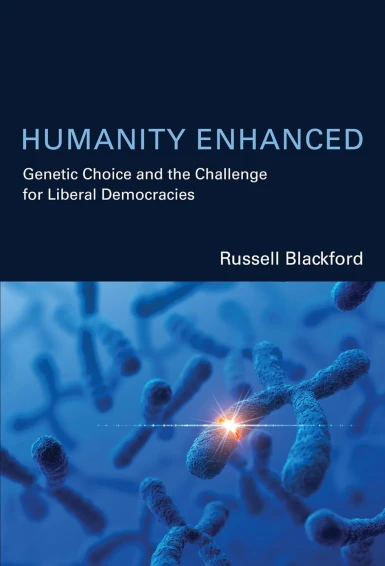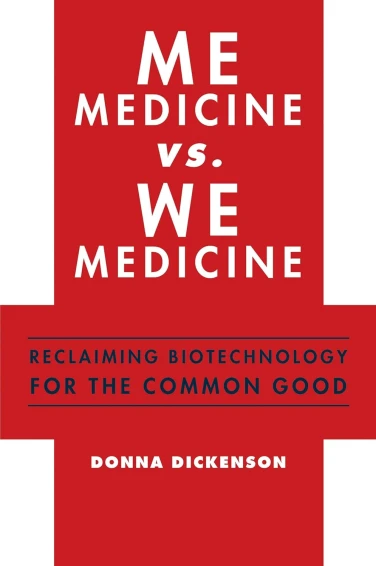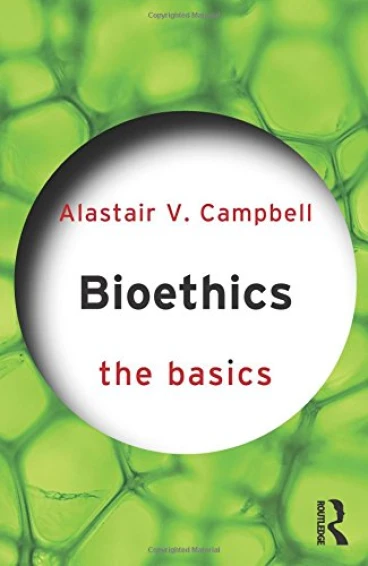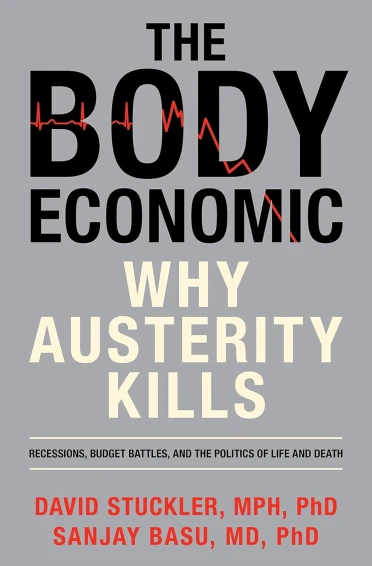
By Andy Miah and Emma Rich
Publisher: Routledge
ISBN: 978-0-415-39364-5
RRP: £21.99
After 13 years, TV had 50 million viewers but it took the Internet only 4 years to gain the same number of users. Love it or loath it, it seems impossible to imagine the future without the Internet as it continues to present previously unimaginable forms of communication and interaction. Medicine and medical practice is not immune from being affected by the Internet’s transforming influence. But just what is the impact of the Net on medical practice? How is it changing the way in which doctor and patient relate to one another? How is cyberspace transforming the way in which we consider the body and issues of identity? These are just some of the questions addressed by The Medicalization of Cyberspace by Andy Miah and Emma Rich.
The book’s focus will particularly appeal to those who have a background in sociology and are interested in social and cultural studies. Whilst highlighting ethical issues, the book does not engage in significant ethical analysis or assessment - something which could be argued is covered by a range of other texts. The strength of the book lies in its sociological focus and the authors’ research, observations and interpretations of the congruence between medicine, cyberspace and humanity.
The authors display the ability to present and guide the reader through what at points could be laborious and turgid material in a way which is informative without being too complex. Admittedly for those who consider the field of sociology to be littered with convoluted terminology they will not be disappointed to come across terms such as “prostheticization of the body” and “cybermedical discourse”. For those of us who are no strangers to sociological studies such terminology will not be too much of bind with the text surely becoming an essential read for those with interests in cultural sociology and social movement studies. For the non-sociology reader if the book’s content is worked through with patience, they will surely find that the book offers fresh and fascinating perspectives on cyberspace.
The ubiquitous rise of the Internet
Without doubt the ubiquitous rise of the Internet has heralded epochal levels of change and transformation with its rapid rise in users showing no signs of abating. As Miah and Rich show the extent and level of this change is already reframing commonly held points of reference as regards how the traditional role of medicine is engaged with in comparison to how it is engaged with in cyberspace. Clearly there is still much to be written, researched and debated on this issue and Miah and Rich acknowledge this, providing ample space for the reader to consider their thesis without feeling bludgeoned into accepting it without question. There will no doubt be aspects of their thesis which will challenge and provoke for example concerning the matter of social movements with specific regard to the Pro-Ana movement and its desire to frame eating disorders as a lifestyle choice and not just an illness. Nonetheless, the careful and responsible handling of this issue by the authors help to at least lay out the situation as it currently stands so that further wider discussion can be had on the ethical implications which arise from such advances within cyberspace.
The Medicalization of Cyberspace helps to clear the ground and establish the geography of the contemporary intersection between medical sociology and cyberspace, in order to initiate greater discussion on the social and ethical implications of such developments. With advances in enhancement technologies such as digital implants and nanotechnologies, this is clearly a conversation which needs to be had and will be all the richer as a result of the contribution which Miah and Rich make and refer to in their book. Certainly the promise of another book by the authors exploring the greater implications of cybermedicalization as enhancement technologies develop is something that is awaited with eager anticipation by this reviewer.
Structure & content
The book is divided into two parts. Entitled the ‘Cybermedical discourse’, part I addresses the main themes and concepts of the cybermedical thesis. Chapter 1 naturally sets out to introduce these main themes which centre on the fact that the medicalization of cyberspace encompasses the consideration of healthcare outside the traditional medical environment within the multifaceted and non-regulated (as opposed to unregulated) space of the Internet. Chapter two proceeds to explore the place of the body in the cybermedical world. The advent of the Internet has presented not only a new technology but as the authors posit a new environment for interaction to take place within. The use of terminology such as “browsing” and “surfing” only help to reflect this idea. The fact that there is scope to hide oneself or present a virtual representation of oneself in this environment may lead to some to conclude that the body is increasing absent. On the contrary, the body is very much present in this new landscape so argue Miah and Riches, with the Internet presenting a collection of different spaces for the body to re-presented in. Reference is made to the fact that the word ‘cyber’ means to steer and so the field of cybercultural studies addresses the issue of how culture is shaped and steered by various technological influences.
Chapter three proceeds to explore and discuss the literature concerning cybermedicalisation and health expertise. Previously there was a time when the sick patient would go to see a doctor in order for the doctor to diagnose the problem and offer appropriate medical help, Today it is just as likely for the patient to tell the doctor what the problem is and offer a range of options in terms of medication and therapies along with the possible risks. Naturally enough such a state of affairs tends to cause widespread resentment to arise amongst the medical profession who highlight the inaccuracies and inconsistencies of much of the information available on the Internet which users can access. Far from ignoring this, the authors acknowledge that information on the Internet does vary in terms of accuracy, quality and consistency. Nonetheless rather than taking this as a basis to make calls for the development of better search tools, Miah and Rich make the compelling point of calling for users of the internet to be better educated in terms of how to make better searches.
How the issue of healthcare governance is addressed becomes the focus of chapter four. Research indicates that both those who are ill and those who are not access the Internet for information on health related issue. Sites such as BBC Health and NHS Online are accessed by people who simply want to become educated on various lifestyle issues. The premise of the chapter is summarised in the words of Burrows and Wright who state that the “…populations are being facilitated to understand what is good for them” (p.58).
To highlight and explore this phenomenon further, chapter five provides an insightful and engaging read by looking at patient narratives and helps to ground theory with the practical. Online health forums, blogs and discussions groups are discussed in the context of helping to provide a dimension of care and support which cannot be found in conventional health care support systems. Within the culture of the Internet a certain level of ambiguity can be established which allows users to engage with issues and participate in discussions which would be far more difficult to do through face-to-face contact. Whilst the reader is never given the impression the authors do not consider face-to-face contact to be worthwhile, the experiences and examples which they cite provide clear and ample evidence that it is a fact that many people are finding the support they need through engaging with others in cyberspace. Using the example of persistent sexual arousal syndrome (PSAS) is a poignant and fascinating part of the book not least because it further reflects another issue the authors raise; that of the Internet helping to raise awareness of illnesses which many may not have heard of previously.
At this point the book turns to look at a number of cases of the medicalisation of cyberspace which have sparked reaction and debate over the governance of medical information. This constitutes part II of the book. Chapter six takes as its theme the body and/as information necessarily objectified and commercialised through online health encounters. An example which demonstrates this is the case of the eBay auction for a human kidney (which never actually took place). Examples such as this raise questions over the changing values associated with healthcare and the proper domain in which these questions should take place. Could this point to the emergence of web related organ trafficking? What ramifications arise when this kind of trafficking takes place within the domain of the unregulated Internet? It is questions like these which help to point to the relationship between the Internet and globalisation. Both help to re-organise (but not remove) previously held idea of what borders are and the extent of their influence, which in turn re-organise and challenge the extent and function of regulation and governance.
Working with this idea further chapter seven looks at the almost impossible challenge of trying to control virtual worlds. Discussion is had over the difference between intellectual property rights and biological property, resulting in the authors positing that the medicalization of cyberspace presents a watershed for how we make sense of the interplay between medicine and cyberspace.
Chapter eight is perhaps the most engaging chapter of the book as it encapsulates through real life examples so much of what the book seeks to communicate. The chapter takes as its focus the pro-anorexia movement, a movement created on the Internet as opposed to in real time. The main focus of the pro-Ana movement is that eating disorders can in actual fact be a lifestyle choice and not just deemed to be an illness. The authors handle this matter well and rather than seeking to put forward a comprehensive ethical analysis on the implications of such a stance, they seek to document their observations as to why such a movement has emerged referring to issues of identity and the body. The authors advocate rejecting assumptions that the existence of the pro-Ana movement is simply a network of very troubled young women who want to harm themselves and others through the promotion of eating disorders, in favour of pushing through to a new place of understanding the complex condition of issues relating to body, health and food. In this place, so the authors argue, anorexia can be considered as a form of identity. Space can be found for stories to be told, sanctuary can be found for the sufferer and sense made of the circumstances. In essence, the chapter points to the fact that the representation of the anorexic body in public spaces in turns leads to a complex set of questions over embodiment.
Chapter nine addresses questions related to the fact that the medicalization of cyberspace causes us to reconsider the relationship between the ethical and social scientific analyses of medical practice which stretch the goals of traditional medicine. At this juncture, Miah and Riches posit some interesting reflections on the matter of post-humanism. In their eyes, cyberspace is an environment lacking flesh and yet remains a place in which there is continued engagement with body matters such as health, reproduction, body disorders and so forth. Thus, the authors argue that the virtualization of the body has led to a prostheticalization of the body which is revealed as a removal process towards an artificial prosthetic; a prosthetic which is designed to be burdensome. From a visual perspective, virtual bodies have no part to play for the missing part is imaginary and “(ab)users pursue a form of truth that is entirely fabricated” (p.115). Blogs, discussions forums and the like are not indicators of the body becoming less fleshly or becoming neutralised into more information. Rather they point to the body being ambiguously transformative absent but present.
So where are these medicalized prosthetic identities located? Interestingly whilst the authors’ response is that they are situated in hypothetical cyberspace communities they make the point that the reader should not read that as meaning “the Internet”. The Internet does have a role in helping to construct these communities but essentially the Internet does not equate to cyberspace communities. Instead a cyberspatial prosthetic is described as an information prosthetic, a mask for someone as opposed to something.
The conclusion helpfully pulls together the various strands of the authors’ thesis regarding the medicalization of cyberspace. Perhaps one of the most helpful points of the conclusion is the illustration of the Internet as a form of doctor’s surgery or hospital. Viewed in this way, the Internet “becomes an interesting metaphorical lens through which to conceptualise the range of contexts that pervade medicalisation cyberspace.” (p. 118).
Rich offers a postscript to the book reflecting her own personal journey and experience of the issues discussed as a result of her father dying from mesothelioma. In the same way that chapter 8 helped to explore patients narratives, Rich’s short but insightful account of the circumstances surrounding her father’s death help to vividly show how online information resources helped to inform, console, comfort and support both her family and her father in a way that physicians either could not or would not have been able to.
Conclusion
Overall, The Medicalization of Cyberspace makes a valid and very necessary contribution to the conversation concerning cyberspace, medicalization and the body. Its value is found in the fact that rather than duplicating arguments already advanced on the positives and negatives of medical information being presented on the web or the horrors which stalk online discussion forms, it digs to the deeper issues of why cyberspace is altering the interaction between medicalization, health and body - a question which is often overlooked. Whilst its immediate readership will be probably be from the field of sociology, the healthcare professional, philosopher and ethicist would do well to engage with Miah and Rich’s thesis if collective understanding is going to be reached both now and in the years to come.










